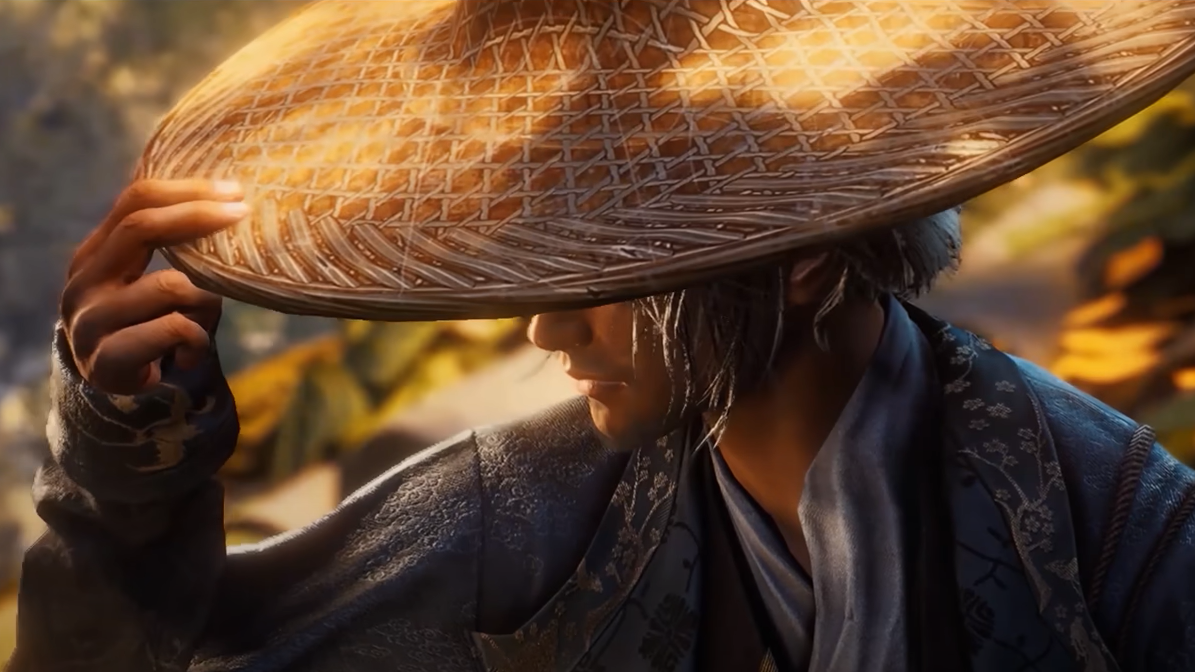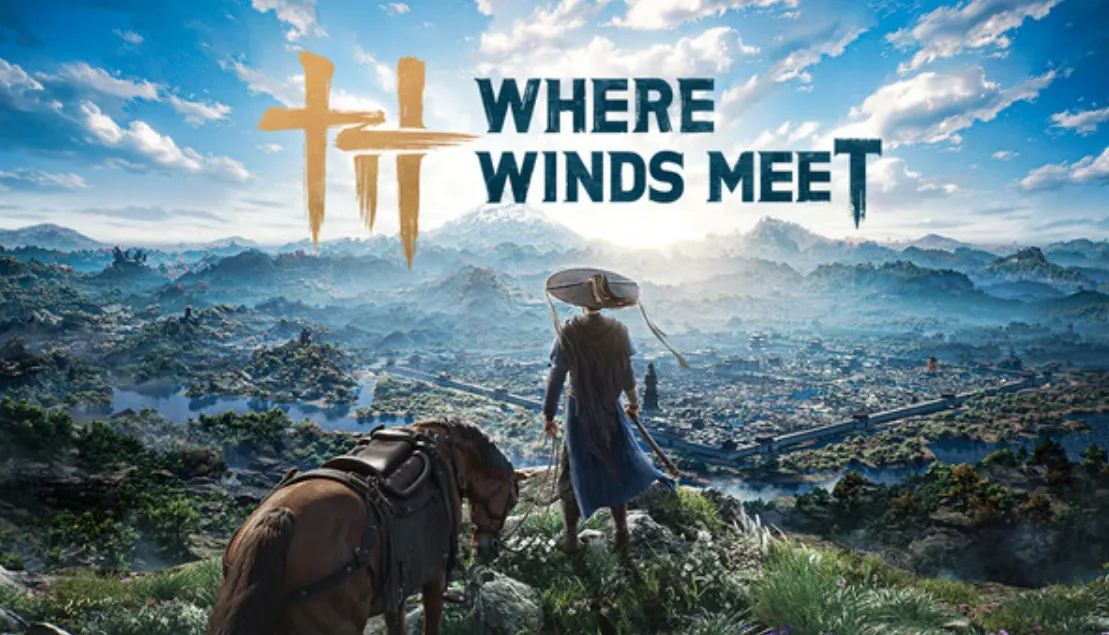Where Winds Meet is not a traditional “one thing” game. It is a free-to-play, online-only open-world wuxia action RPG that can be played as a long single-player campaign, as a small co-op adventure with up to four players, and as a lightweight MMO-style experience with guilds, raids, arenas, and social hubs.
The result feels closer to a big-budget open-world ARPG with MMO elements than to a classic persistent-world MMORPG.
Core genre: open-world action RPG first, MMO-adjacent second
On PC (Steam and a standalone launcher), PlayStation 5, and mobile, Where Winds Meet is positioned as an open-world action-adventure RPG set in 10th-century China during the Five Dynasties and Ten Kingdoms period. You create a custom “young sword master,” explore over 20 regions, and push through a narrative that can easily run well past 100 hours.
The combat is real-time and character-action flavored: you pick from multiple weapon types (swords, spears, dual blades, bows, fans, umbrellas, and more), string together combos, parry, dodge, and weave in wuxia-style movement and mystical skills like Tai Chi techniques. The game leans into cinematic boss fights and flashy animations rather than slow tab-target MMO combat.
Under the hood, it is a live service: always online, free to play, with in-app purchases, a battle pass–style system, and a cosmetic-heavy monetization model. But in day-to-day play, it behaves much more like a massive open-world ARPG that happens to sit on MMO infrastructure.
Single-player and co-op: the main way you actually play
The part most players will touch first is the story-focused mode that plays like a conventional single-player action RPG:
| Feature | Single-player / Co-op mode |
|---|---|
| Campaign | Full narrative campaign, ~150 hours of “rich solo gameplay” promised on PlayStation’s listing. |
| Player count | Solo by default, with optional co-op for up to 4 players in a private instance. |
| World | Your own shard of the open world; you don’t see random players running around. |
| Progression | Character XP, gear, skills, professions, and story progression live here. |
| Content types | Main story quests, side stories, exploration quests, profession quests, dungeons, bosses, open-world activities. |
You can invite up to three other players to your world for co-op. In that setup, your shard behaves like a small multiplayer session: you all fight enemies together, run dungeons, and tackle events.
Progress sharing is more nuanced. The host’s world always advances. In earlier tests, guests often helped without advancing their own story or could only share progress in specific situations (such as when everyone had the same quest active and stayed close to each other). As the global launch has rolled out, the game has kept that bias toward the host, with partial co-op story support rather than fully synchronized, MMO-style main quest progress for everyone.
Story instances also sometimes force solo segments even if you’re grouping, echoing how games like Final Fantasy XIV treat personal story beats. So even if you play “together,” you should expect periodic solo phases.

Online mode: a social lobby with MMO-like systems
Where Winds Meet also exposes a separate “online” or “multiplayer” mode that’s at the heart of the confusion around whether this is truly an MMO.
| Feature | Online / MMO-style mode |
|---|---|
| World structure | Shared hubs and regions with dozens of visible players per instance, backed by servers holding thousands. |
| Open-world enemies | Typically none; most PvE and PvP combat is instanced off the shared world. |
| Main story | Cannot be advanced here; story progression happens in the private world. |
| Main uses | Socializing, guild features, matchmaking for dungeons/raids/arenas, social events, world bosses during scheduled events. |
| Systems | Guild housing, large guild wars, arenas, battle royale-style PvP, marriage, commerce-focused guilds, social mini-games. |
Think of this not as a full sandbox MMORPG where everything happens in one persistent open world, but as a “Massively Multiplayer Lobby Online.” You log into towns and shared spaces filled with other players, chat, emote, play music, party up, and then queue into instanced activities—raids, dungeons, arenas, or large-scale guild fights.
Some regions can host around 30–32 players per instance, with exceptions for guild areas that support larger crowds. Server populations reach into the thousands, but sharding and instancing mean you rarely see more than a few dozen people at once in any given slice of the map.
Crucially, there is almost no traditional open-world PvE grinding in this mode. Regular mobs and story quests do not live here, and in earlier builds, the open world in online mode was largely enemy-free outside of specific events such as scheduled world bosses. If your definition of an MMO hinges on grinding mobs in a shared overworld, this will feel closer to Guild Wars 1, Destiny’s tower plus instanced missions, or a social hub stapled to a big ARPG.
What the game shares between modes
Despite the split, you don’t roll separate characters for “single-player” and “MMO mode.” Where Winds Meet uses a single account-wide character profile, with cross-progression supported between PC platforms and PS5 through an account-linking flow on the official site at wherewindsmeetgame.com.
| Element | Shared between modes? |
|---|---|
| Character identity (appearance, name) | Yes |
| Level and stats | Yes |
| Gear inventory | Yes, equipment and progression carry over. |
| Unlocked skills and Inner Ways | Yes |
| Main story progression | Single-player/co-op only; not advanced in online mode. |
| Guild membership and social systems | Online mode only, but tied to your character. |
| Event currencies, PvP rankings | Earned through online activities, usable within the overall progression web. |
This setup lets you treat online mode as an optional endgame or side activity. You can play the vast majority of the game as a lone wanderer or in tight-knit co-op and only dip into the MMO-like layer for guild wars, large raids, or structured PvP.
Combat, builds, and wuxia flavor
Combat is one of the clearest signals that Where Winds Meet is built as an action RPG first. Encounters revolve around:
- Weapon choice and hot-swapping (sword, spear, dual blades, bows, fan, umbrella, more).
- Timing-based parries, dodges, and counter-attacks rather than static rotations.
- Martial arts skills and mystic techniques slotted onto face buttons and triggers.
- Boss fights with multiple phases, heavy telegraphs, and cinematic flourishes.
On top of that, the game layers in buildcraft: Inner Ways and Mystic Skills act like talent systems, gear adds stats and bonuses, and there are jobs and professions that shape how you play—from healer-style roles to merchants and more socially driven “paths.” In group content, parties can lean into DPS, tank, or support setups much like in MMO dungeons and raids, while solo players can tune difficulty or even enable auto-parry-style assists.
Traversal is also deeply wuxia: wall running, rooftop parkour, multi-stage jumps, gliding, grappling-style skills, and other over-the-top movement are built into exploration. These systems matter in both story mode and in PvP, where precise, latency-sensitive inputs become more noticeable.
MMO-style systems: guilds, clans, PvP, and social roles
Where Winds Meet borrows heavily from MMO design for its long-term systems, even if the open world isn’t a classic persistent battlefield.
- Guilds and guild housing: Players can create or join guilds with large, shared housing spaces that host events, social gatherings, and potentially hundreds of members.
- Large-scale guild wars: Structured battles pit guilds against each other, using your existing builds and gear.
- Arenas and ranked PvP: 1v1, 3v3, and other formats exist in both gear-based and stat-normalized modes.
- Battle royale–style modes: A nod to NetEase’s Naraka: Bladepoint heritage, with last-player-standing rules.
- Social “sects” or clans: NPC-run factions (distinct from player guilds) introduce sandbox-style goals such as healing injured players, enforcing justice, or embracing drunken chaos; they can impose KPIs, restrictions, or roleplay-like expectations in exchange for cosmetics and status.
- Marriage and relationships: Players can marry, gain buffs, and participate in wedding events visible to nearby players.
- Commerce and professions: Trade-focused guilds and professions support a light economy, especially prominent on Chinese servers.
These systems are where the game feels most like an MMO socially, even if the combat spaces are instanced. They’re designed to keep people logging in daily or weekly for scheduled activities, dailies, and seasonal events rather than for endless open-field grinding.
Monetization: free-to-play with cosmetics, gacha, and optional subs
Where Winds Meet is free to download and play on Steam, the official PC launcher, and PS5. On PlayStation, there is an optional pre-order bundle for $14.99 that grants cosmetics, a name card background, some coins, and a couple of “draw” items, but the core game remains free.
The monetization pillars include:
- Cosmetic outfits and skins: Outfits, weapon skins, and other appearance items are the main draw, often very elaborate.
- Gacha-style draws: “Draw” items like Lingering Melody are used to roll on cosmetic or reward pools that include random elements.
- Battle pass: A seasonal reward track that hands out cosmetics and currencies as you complete tasks.
- Optional subscription: A monthly subscription offers extra rewards and conveniences but does not directly increase combat stats.
The official PS5 FAQ explicitly states that purchases “will not affect a player’s abilities or skills,” positioning the model as cosmetic-forward rather than hard pay-to-win. Still, the overall interface reflects its free-to-play DNA: multiple currencies, red-dot notifications nudging you to claim small rewards, and daily/weekly objectives.

Platforms, performance, and always-online reality
Where Winds Meet runs on Windows, PS5, and mobile devices, with China getting the game first (PC in December 2024, mobile in early 2025) and the global PC/PS5 launch following in November 2025. The PC version is heavy: the Steam build requires roughly 100GB of storage, with 16GB of RAM minimum and 32GB recommended, and midrange GPUs like a GTX 1060 6GB listed as the floor.
The game is always online, even in “solo” play. There is no true offline mode; single-player and co-op sessions still connect to official servers. This enables shared progression and cross-play but makes network latency very visible, particularly in movement and precise combat timing. On distant regions, server-side validation and a lack of aggressive lag compensation can make double/triple jumps and parries feel sluggish and inconsistent.
On PS5, Where Winds Meet supports 4K output, DualSense haptics and adaptive triggers, Tempest 3D Audio, and PS5 Pro enhancements like PSSR upscaling and advanced ray tracing.
So what kind of game is Where Winds Meet, really?
Where Winds Meet is best described as a wuxia open-world action RPG that happens to live on MMO rails. The heart of the experience sits in a long, story-heavy single-player campaign that you can open up to three friends, layered with action-combat dungeons and cinematic boss fights. Around that, the game wraps a lobby-like online world with guilds, raids, and PvP modes that borrow heavily from MMORPG design, without adopting a “true” shared open world full of enemies and questing.
If you want a pure old-school MMO with grinding fields of mobs and fully shared story questing, this will feel like a hybrid. If you’re more interested in a lavish martial-arts RPG that gives you the option to raid, duel, and roleplay with thousands of other players when you feel like it, Where Winds Meet is very much built for that.


